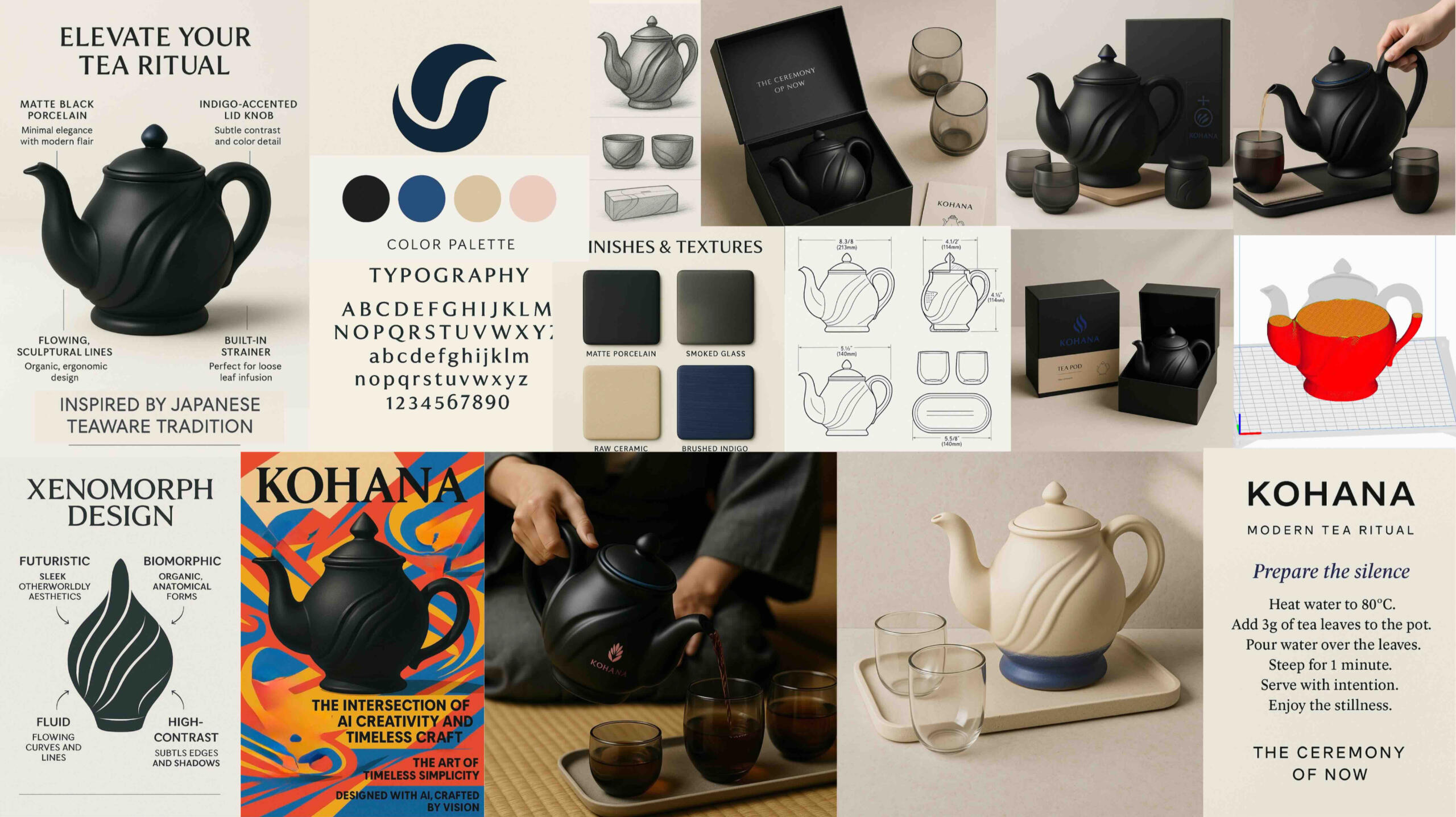portfolio Pancho Dachkinov
the current page contains work on some previous projects and concept designs.

Mechanical engineer with a Ph.D. in engineering from Kyushu Institute of Technology, Japan.
Assistant Professor at the Institute of Robotics-Bulgarian Academy of Sciences with over 10 publications. Contributor to EU-funded innovation projects.
Project Officer at the European Innovation Council at the European Commission.
Extensive experience in product design, manufacturing, 3D printing, logistics, and e-commerce platforms.
This site is for informational and visual storytelling purposes only. No personal data is collected, stored, or tracked.
education
Technical University of Sofia

Bachelor’s Degree
Logistics Engineering
Period: 2012 - 2016;
Subjects: Industrial Technologies; Automation;
Diploma Project: “Integration of Industrial Bar-Code Scanners at the Intralogics System”
Master’s Degree
Computer Aided Design and Technologies in Industry
Period: 2016 - 2018;
Mechanical Engineering;
Subjects: CAD/CAM/CAE, 3D Printing and Additive Manufacturing, Robotics, Microelectromechanical Systems, Materials and Technology Selection in Manufacturing, Industrial Information Systems;
Diploma Project: “Design of a Robot with Open Kinematics Structure, Driven by Shape Memory Alloy Wires”
Kyushu Institute of Technology
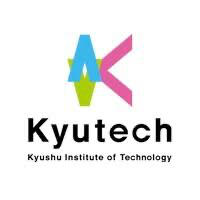
Doctor of Philosophy in engineering
Period: 2029 - 2022
Development and implementation of 3D Printed elastic compliant mechanisms into the design of supportive orthotic devices.
Developed a rehabilitation protocol, based on the individual conditions and the stage of recovery of the patients.
Worked on the implementation of the “Cellular solids” theory in the 3D Printing design to optimize the internal structure of the components.
Worked on local topology optimization of 3D printed parts based on FEA.
Topic: “A Systematic Design and Analysis Method of Elastic 3D Printed Knee Supportive Orthotic Devices to Meet Individual Needs”
President of the Foreign Student Association of our Campus.
Professional Experience
Institute pf Rpbptocs - Bulgarian Academy of Sciences

Young Researcher
Period: 2016 - 2019
Research Exchange:
Graduate School of Life Science and Systems Engineering Kyushu Institute of Technology (KYUTECH), Kitakyushu, Japan, 9 months;
Centre Hospitalier Universitaire Grenoble Alpes, Grenoble, France, 1 month;
Hassan II University of Casablanca, Morocco, 1 month;
Institute pf Rpbptocs - Bulgarian Academy of Sciences

Postdoctoral Researcher & Assistant Professor
Period: 2022 - 2023; 2025 - Present
Member of the Scientific Council of the Institute of Robotics.
Member of the Marie Curie Alumni Association (MCAA): Bulgarian Chapter and Policy Work Group.
Participant in multiple national and European projects and conferences.
Development of a novel non-humanoid robot capable of facial expressions to support the educational process.
Worked on directly assembled 3D Printed Units and their implementation in Robotics.
Worked on various in-pipe inspection robot designs.
European Innovation Council and SMEs Executive Agency

Blue Book Trainee & Interim Project Officer
Period: 2023 - 2025
European Innovation Council Pathfinder Unit.
PandamorphiX
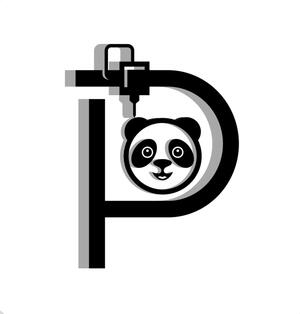
Founder
2025 - Present
AI-powered platform that helps e-commerce entrepreneurs and small businesses design, create, ustomize, and launch new physical products.
Skills & Certificates
3D Printing: FDM, SLA, slicing software
Computer Aided Design and Engineering Software:
Autodesk Inventor Professional Nastran 2020 - September 2019, ID: 20190322, CAD Point Ltd.
Autodesk Inventor Professional 2018 Level: Advanced - March 2017, ID: 201/0201, CAD Point Ltd.
Autodesk Inventor 2017 - February 2017, ID: 20170186, CAD Point Ltd.
Autodesk Fusion 360.
Office Software and Platforms for Collaboration.
Experimental Design.
Soft Skills:
Science Communication, Academic Writing and Presenting Skills.
International Collaborations, Team Work, Leadership.
Cambridge Certificate in Advanced English (C1) - April 2023, ID: C1608452, Cambridge University.
Selected Projects
Center of competence "Intelligent mechatronic, eco–and energy-saving systems and technologies" BG05M2OP001-1.002-0023-C0 January 2023 - September 2023.
Horizon 2020 MSCA RISE Cyber Physical Systems for Pedagogical Rehabilitation in Special EDucation (CybSPEED) - 777720, 2017 - 2019.
Selected Conferences
International Conferences:
SCIS-ISIS 2018: Joint International Conference on Soft Computing and Intelligent Systems and 19th International Symposium on Advanced Intelligent Systems : Toyama, Japan
Publications
Dachkinov, P., Doctoral Thesis “A Systematic Design and Analysis Method of Elastic 3D Printed Knee Supportive Orthotic Devices to Meet Individual Needs”, 2022.
Bhattacharjee, A., Dachkinov, P., Wagatsuma, H., & Bhattacharya, B. (2022). 3D PRINTED BEAMS WITH VARIABLE INFILL DENSITIES. 1–12.
Tanev, T., Dachkinov, P., Valayil, T., Dimitrova, M., Kostova, S., & Lekova, A. (2023). Implementation of Robotic and Assistive Technologies in the Patientcentered Physical Rehabilitation. Journal of the Technical University of Gabrovo, 66, 11–15. https://doi.org/10.62853/gjmv4858
Dachkinov, P., Kasai, S., Tanaka, K., & Wagatsuma, H. (2021). Applications A COMPUTATIONAL MODEL OF 3D PRINTING ORTHOSES ASSOCIATED WITH A SYSTEMATIC STRUCTURAL ANALYSIS TOWARD REVERSE ENGINEERING ORIENTED PRODUCTION, ICIC
Dachkinov, P., Kasai, S., Tanaka, K., & Wagatsuma, H. (2022). Flexible Bar Geometric Designs for Personalized Knee Orthoses Inspired by Compliant Mechanisms. Journal of Robotics, Networking and Artificial Life, 9(1), 59–65.
Kasai, S., Dachkinov, P., Tanaka, K., & Wagatsuma, H. (2022). A Systematic Analysis of the Knee Support Exoskeleton Based on Multibody Dynamics Toward Personalization with 3D printed Spring-Damper Components. Proceedings of International Conference on Artificial Life and Robotics, 712–716. https://doi.org/10.5954/icarob.2022.gs1-2
Dachkinov, P., Bhattacharjee, A., Bhattacharya, B., & Wagatsuma, H. (2022). A Three-Dimensional Design of the Multi-material Joint System to Realize a Structural Spring-Damper Compliant Mechanism with Versatility in Engineering Fields. Proceedings of International Conference on Artificial Life and Robotics, 193–200. https://doi.org/10.5954/icarob.2022.gs3-1
Dachkinov, P., Tanev, T., Lekova, A., Batbaatar, D., & Wagatsuma, H. (2018). Design and motion capabilities of an emotion-expressive robot EmoSan. Proceedings - 2018 Joint 10th International Conference on Soft Computing and Intelligent Systems and 19th International Symposium on Advanced Intelligent Systems, SCIS-ISIS 2018, 1320–1326. https://doi.org/10.1109/SCIS-ISIS.2018.00207
Lekova, A., Tanev, T., Kostova, S., Dachkinov, P., & Bouattane, O. (2019). Social Robots for Reinforcing Attention and Forming Emotional Knowledge of Children with Special Educational Needs. International Journal of Information Science & Technology, 3(6), 25–39.
Chavdarov, I., Dachkinov, P., Elenchev, G., Iliev, R., Stoyanov, I., Mincheva, S., & Krastev, A. (2018). 3D Printed Humanoid Hand. Proceedings of the International Conference “Robotics & Mechatronics and Social Implementations”2018, 777720, 107–111.
Lekova, A., Pavlov, V., Chavdarov, I., Krastev, A., Dachkinov, P., Stoyanov, I., (2018). Augmented intelligence for teaching robots by imitation, International Scientific Conference Industry 4.0,. 27(1), 24–27.
Dachkinov, P., Chavdarov, I., Pavlov, V., Modeling An In-Pipe Inspection Robot, Journal of Physics and Technology, ISSN 2535-0536 http://jpt.uni-plovdiv.bg/, 2017, Plovdiv University Press „Paisii Hilendarski"
Chavdarov, I., Dachkinov, P., Krastev, A., Trenev, V., Elenchev, G., Design and Analysis of Directly Assembled 3D Printed Rotational Unit. Applications in Robotics, (Published in Bulgarian) International Scientific Conference “Automation of the Discrete Manufacturing” XХVI, (2017). p-p. 412–416.
Elenchev, G., Pavlov, V., Chavdarov, I., Krastev, A., Dachkinov, P., Static Force Analysis of a Leg of a Six Legged Robot, (Published in Bulgarian) International Scientific Conference “Automation of the Discrete Manufacturing” XХVI, (2017), p-p. 176–180.
Selected Concepts & Designs
Bachelor Thesis: Integration of Industrial Bar-Code Scanners at the Intralogics System
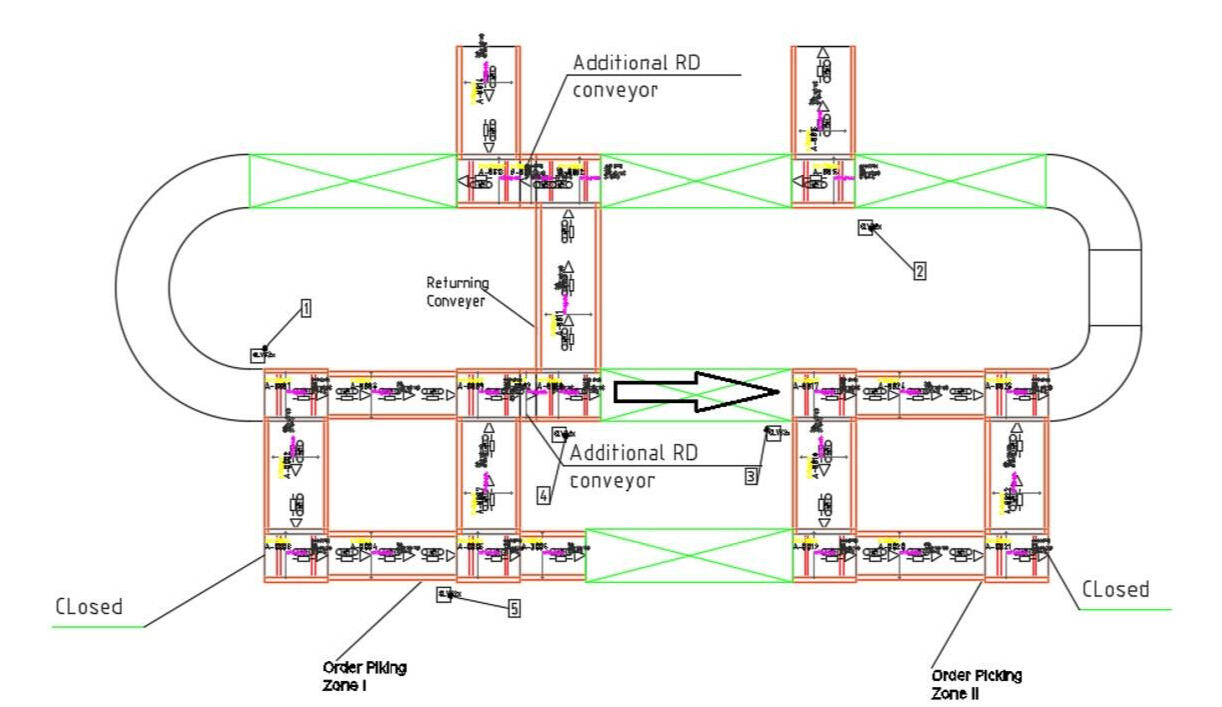
Master Thesis: Design of a Robot with Open Kinematics Structure, Driven by Shape Memory Alloy Wires
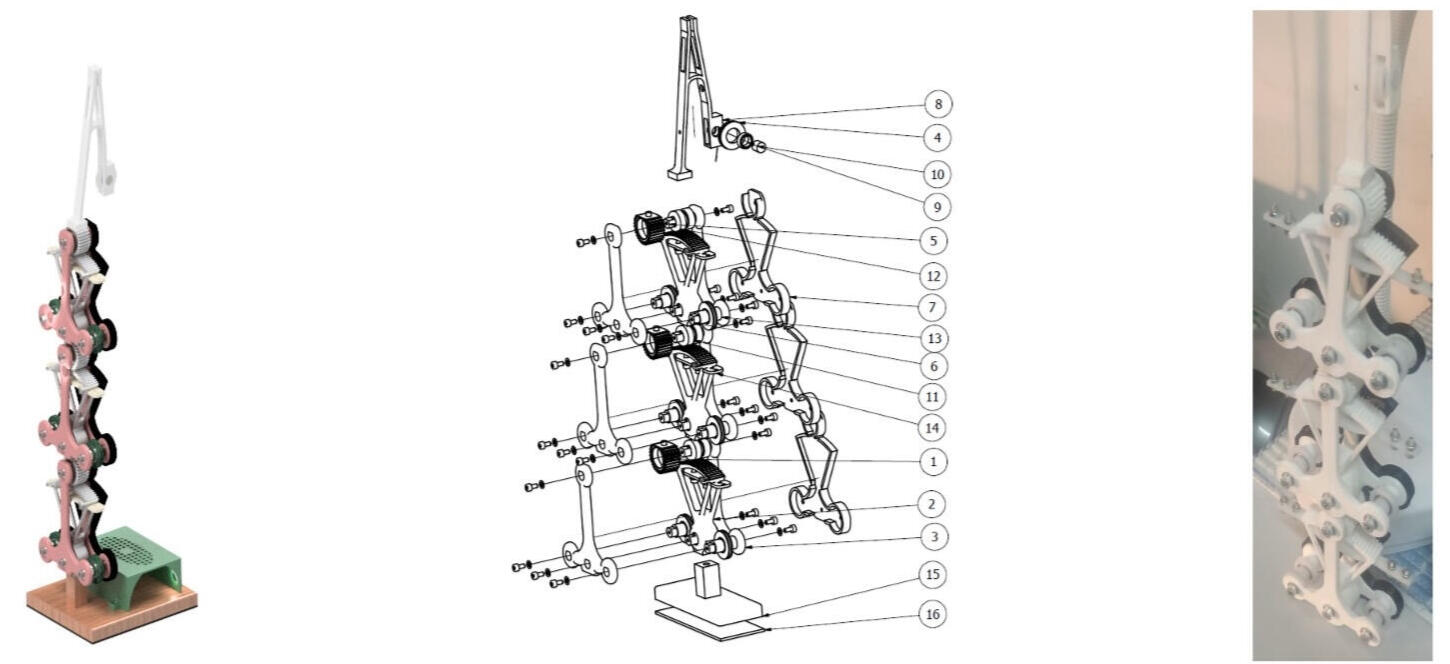
This work presents the design and development of a robotic manipulator with an open kinematic structure, actuated by shape memory alloys (SMAs). The proposed robot features a modular configuration with planetary gear-based links, enabling an expanded working area and enhanced redundancy. The modular approach facilitates adaptability, allowing deployment in various applications, and complex manipulation scenarios.
The research encompasses the complete design process, including kinematic and kineto-static analyses to optimize system performance. A detailed study of SMA wires is conducted to determine their optimal parameters for actuation (maximum force, reaction time, deformation, activation temperature and speed). The work area of the manipulator is analyzed to ensure functional efficiency. Additionally, CAD models and technical drawings of all components are created, followed by a structural strength analysis to validate mechanical integrity.
A prototype of the robot is 3D printed. A basic control system is implemented using a direct current (DC) power supply to regulate the actuation of SMA-driven mechanisms.
Finally, a cost analysis is conducted to evaluate the economic feasibility of the proposed design.
The outcomes of this research contribute to the advancement of modular, SMA-actuated robotic systems with enhanced flexibility and operational capabilities.
Drawings
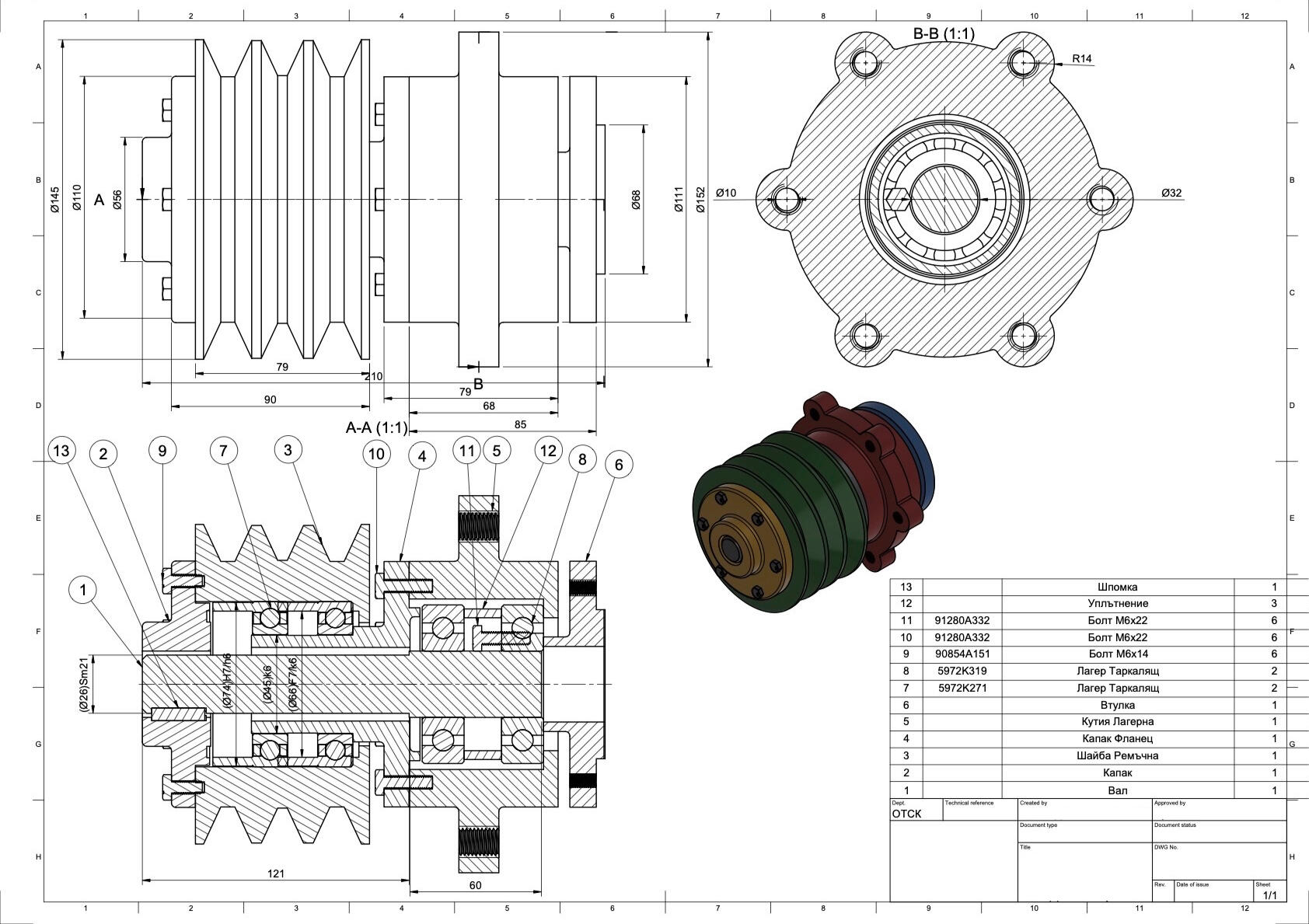

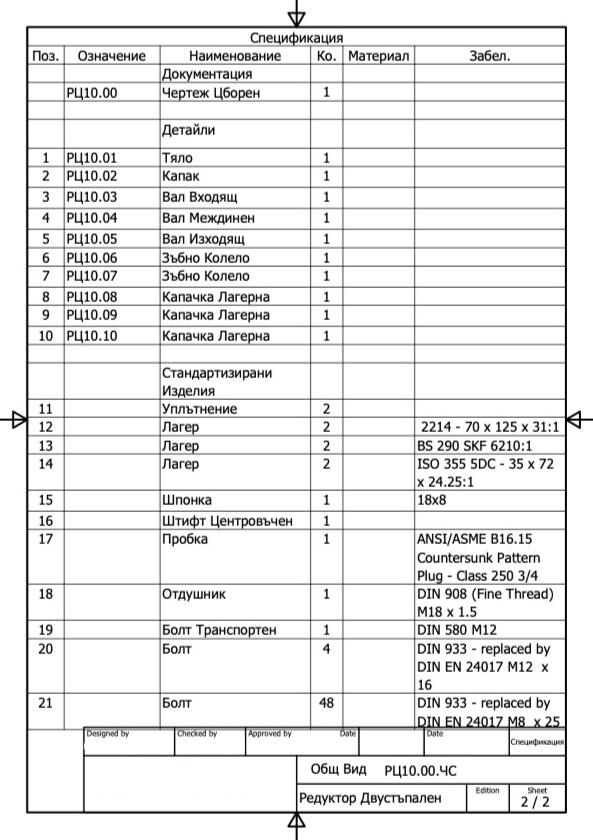
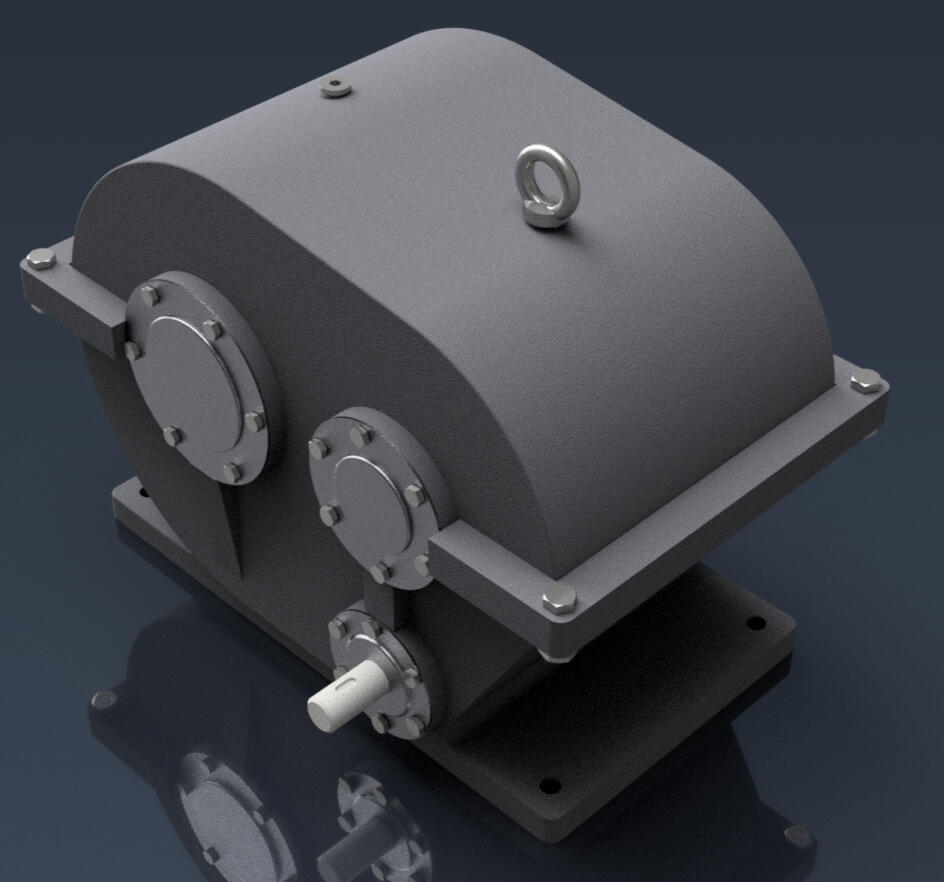
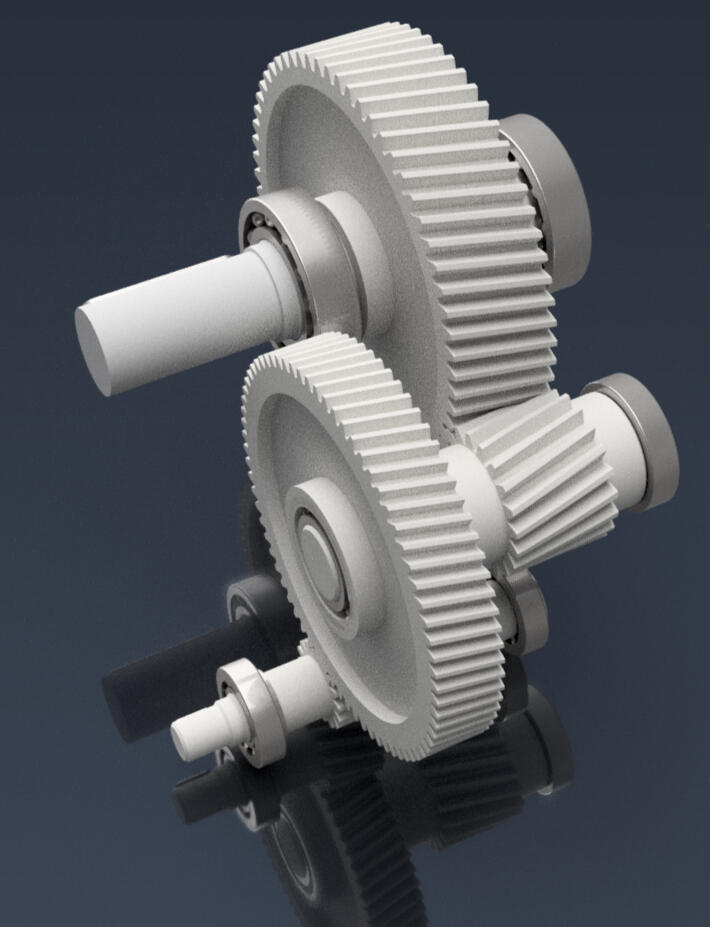
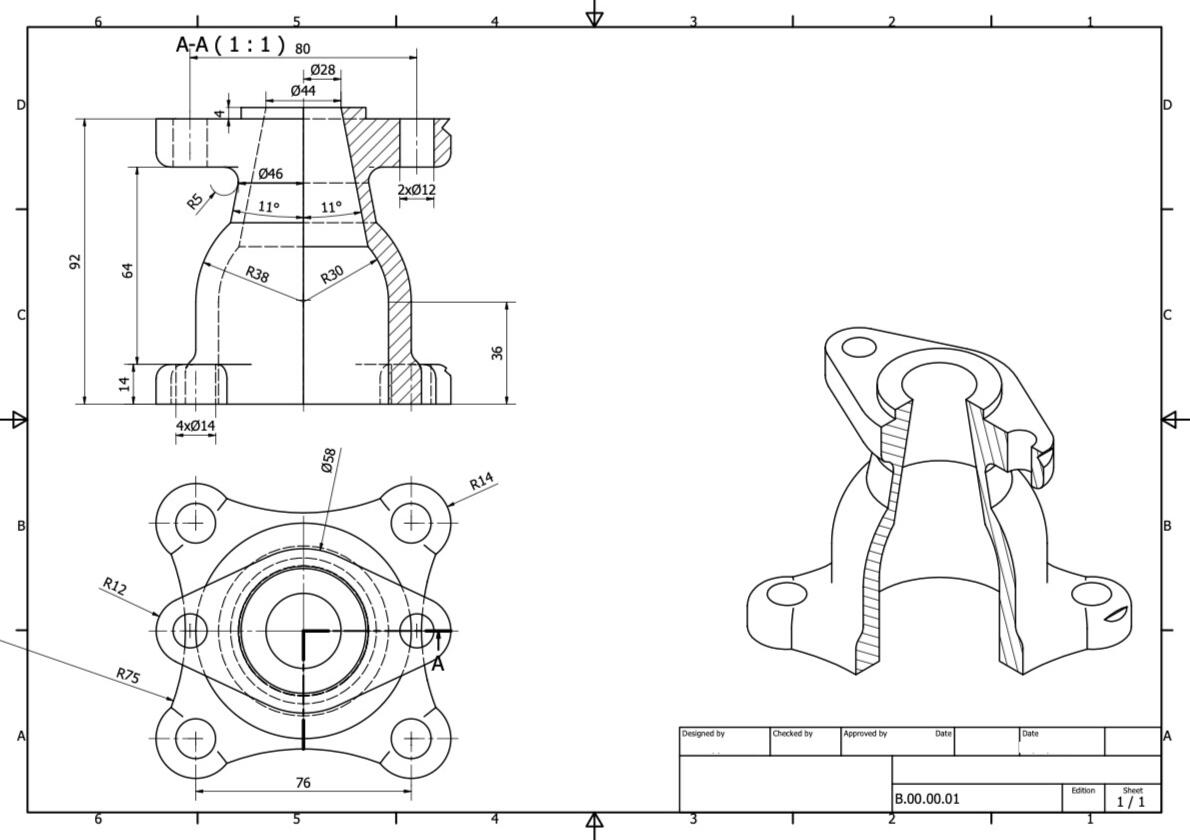
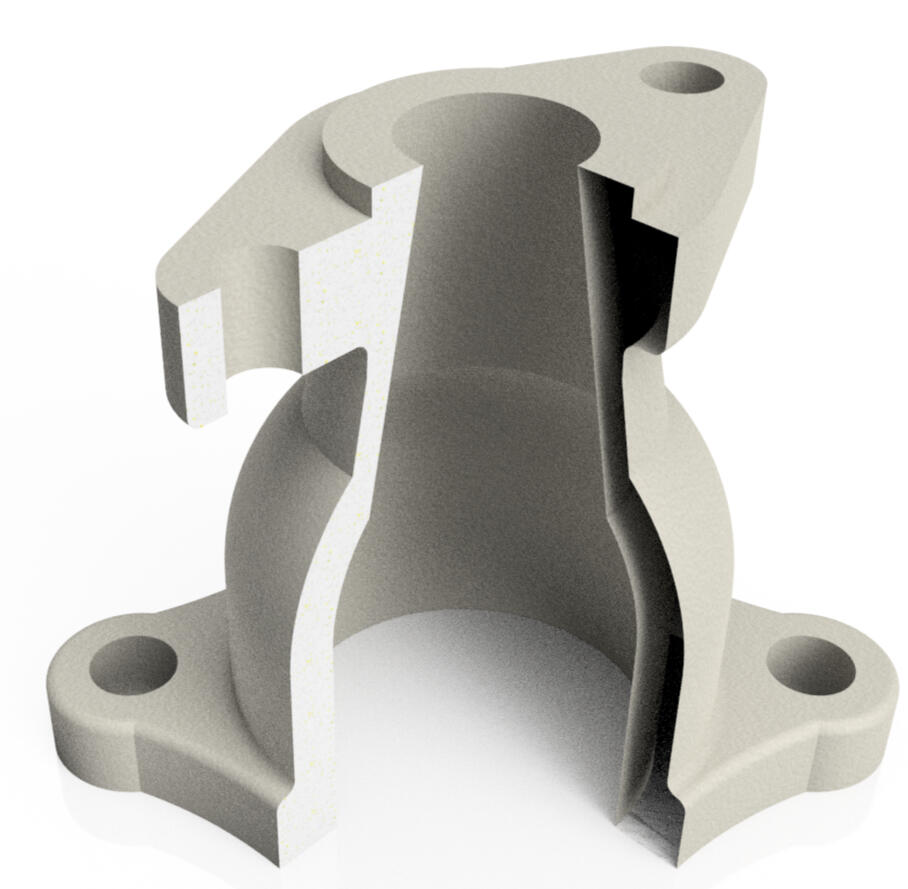
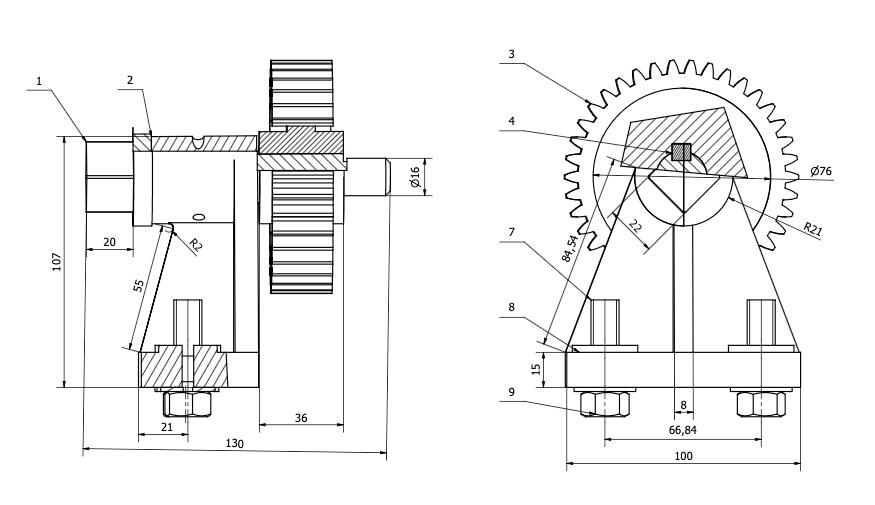
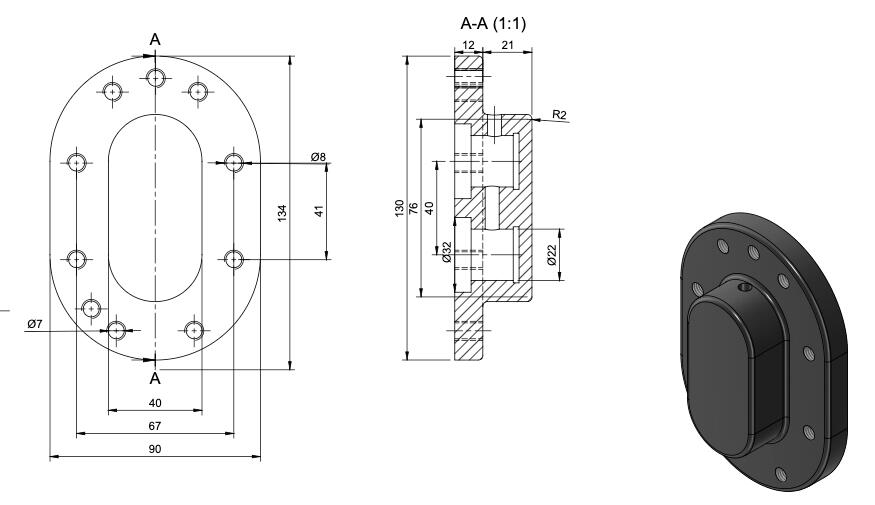
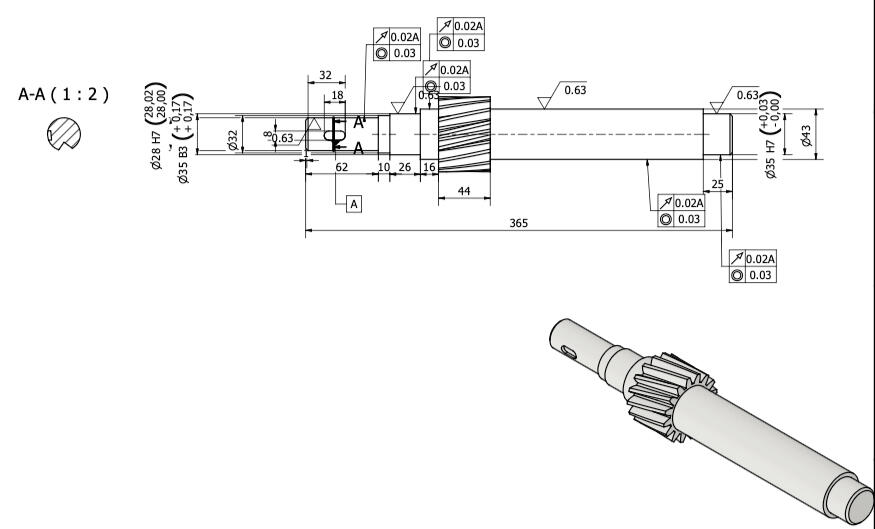
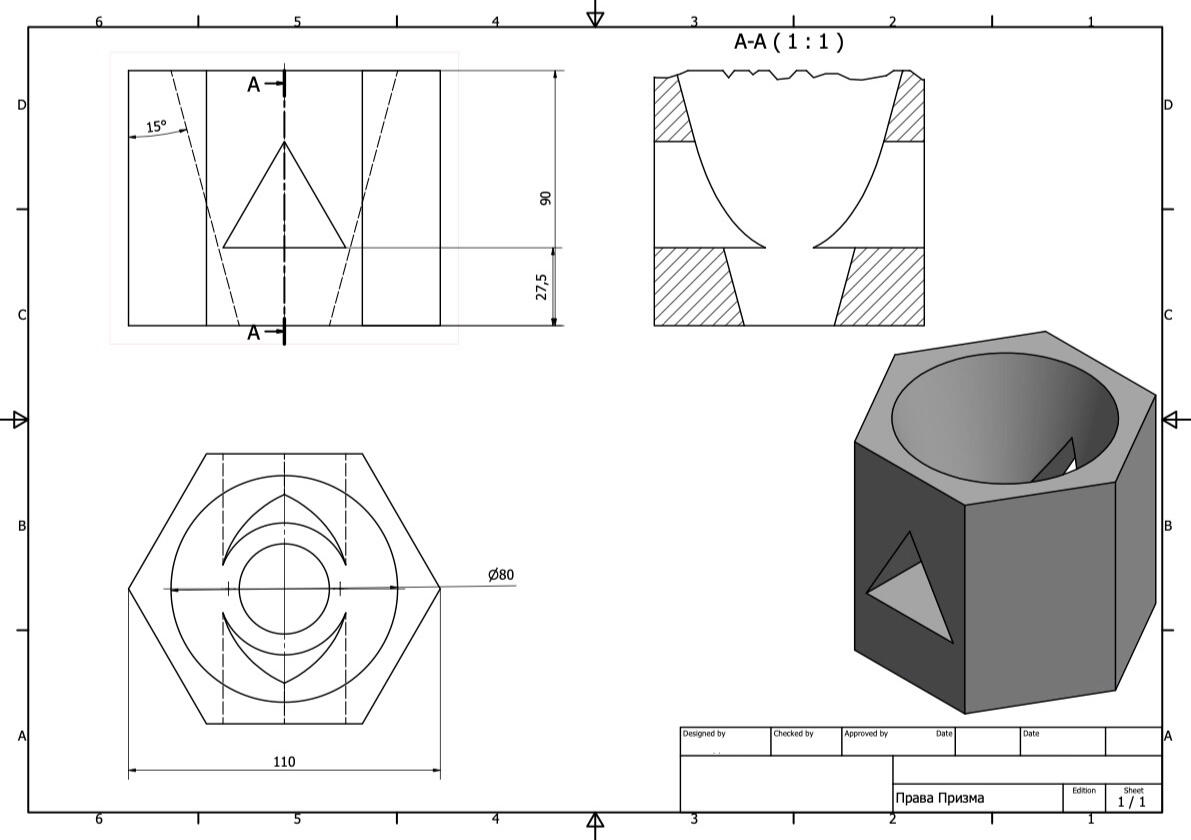
In-Pipe Inspection Robot

Modeling An In-Pipe Inspection Robot
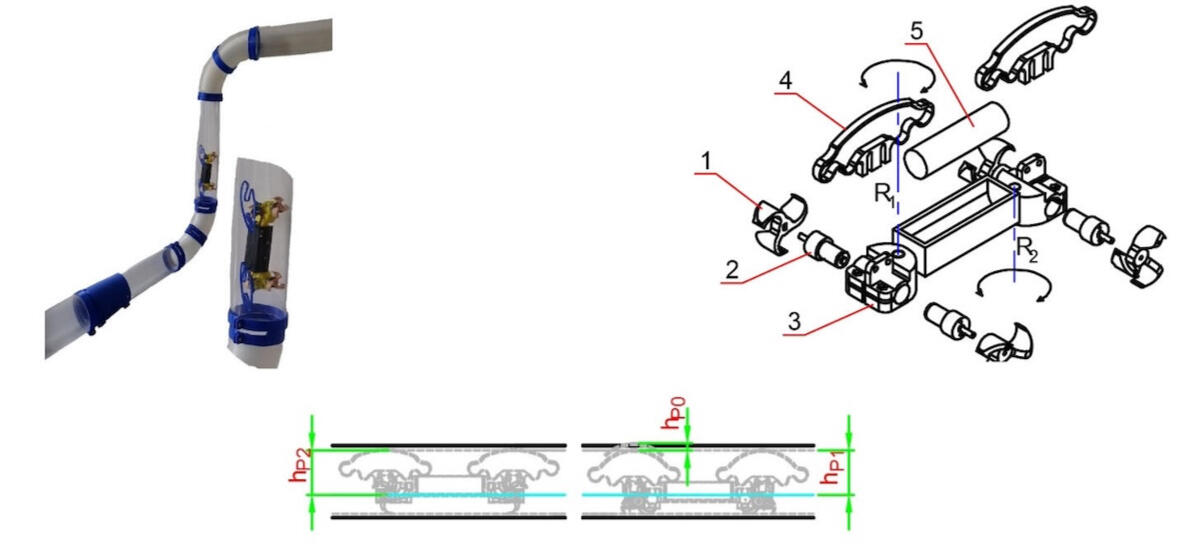
This paper presents the design and development of a novel mobile robot for in-pipe inspection, featuring six contact points with the pipe’s inner surface. The robot is constructed using 3D printing technology, enabling a lightweight and customizable design. It incorporates four independently driven modules and elastic elements to maintain stable contact with the pipe walls, ensuring effective locomotion across various pipe orientations and angles.
A comprehensive analysis is conducted to determine the load distribution at the contact points, a critical factor for optimizing traction and maneuverability. The results of this analysis are graphically represented to illustrate the system’s performance. Additionally, experimental evaluations are performed to assess the robot’s ability to navigate complex routes within pipelines. The findings contribute to the advancement of autonomous in-pipe inspection technologies, improving efficiency and reliability in pipeline maintenance and monitoring.Dachkinov, P., Chavdarov, I., Pavlov, V., Modeling An In-Pipe Inspection Robot, Journal of Physics and Technology, ISSN 2535-0536 http://jpt.uni-plovdiv.bg/, 2017, Plovdiv University Press „Paisii Hilendarski"
DESIGN AND ANALYSIS OF 3D PRINTED AND ASSEMBLED ROTATIONAL UNITS.
APPLICATIONS FOR MECHANISMS USED IN ROBOTICS

This paper explores the application of 3D printing as an additive manufacturing technology for the development of novel rotational assembly units. Various designs of assembled rotational mechanisms fabricated using 3D printing are presented. A detailed experimental analysis is conducted to evaluate the clearances within these constructions, providing insights into their impact on mechanical performance.
The obtained results are further analyzed for optimization purposes, aiming to enhance the precision and functionality of the printed mechanisms. Additionally, potential applications of these optimized rotational units in robotic systems are discussed, demonstrating their relevance in advanced mechanical design. This study contributes to the refinement of 3D-printed mechanical assemblies, offering new possibilities for their implementation in robotics and automation.Chavdarov, I., Dachkinov, P., Krastev, A., Trenev, V., Elenchev, G., Design and Analysis of Directly Assembled 3D Printed Rotational Unit. Applications in Robotics, (Published in Bulgarian) International Scientific Conference “Automation of the Discrete Manufacturing” XХVI, (2017). p-p. 412–416.
Design and Motion Capabilities of an Emotion-Expressive Robot EmoSan
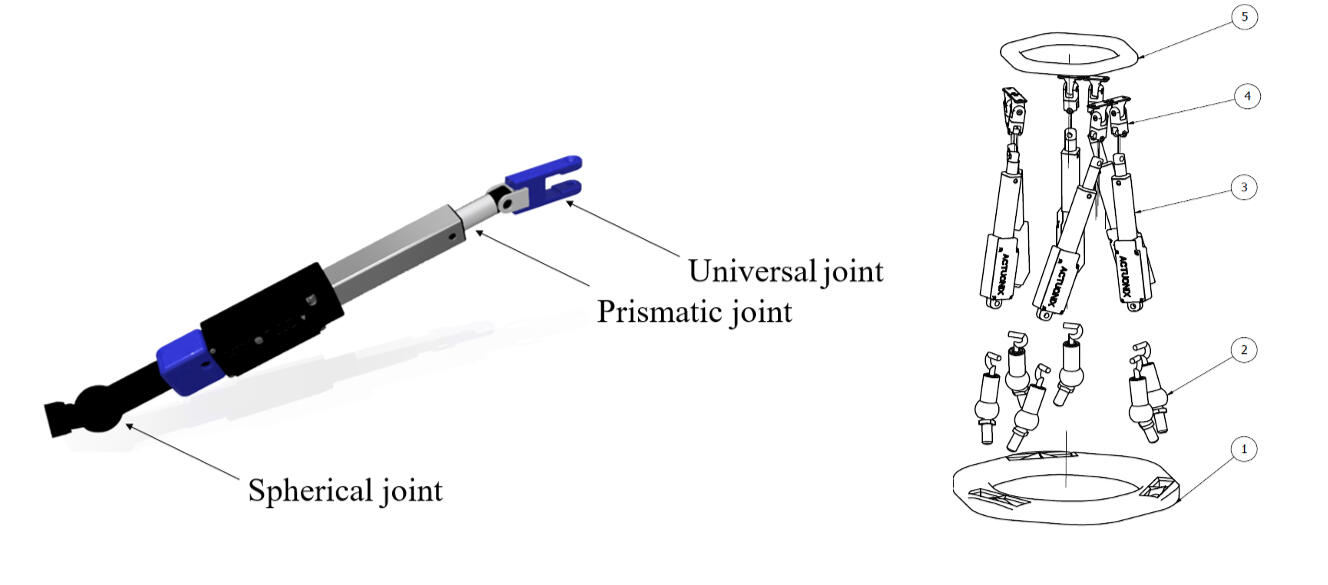
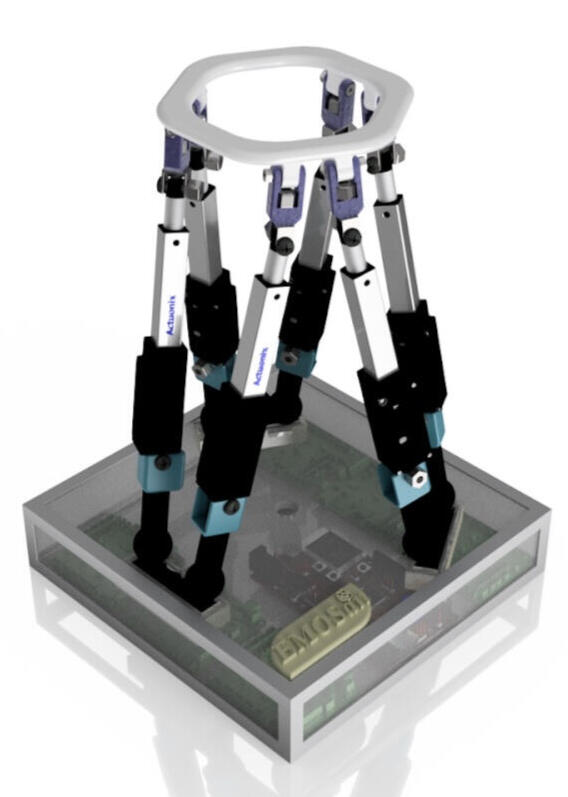
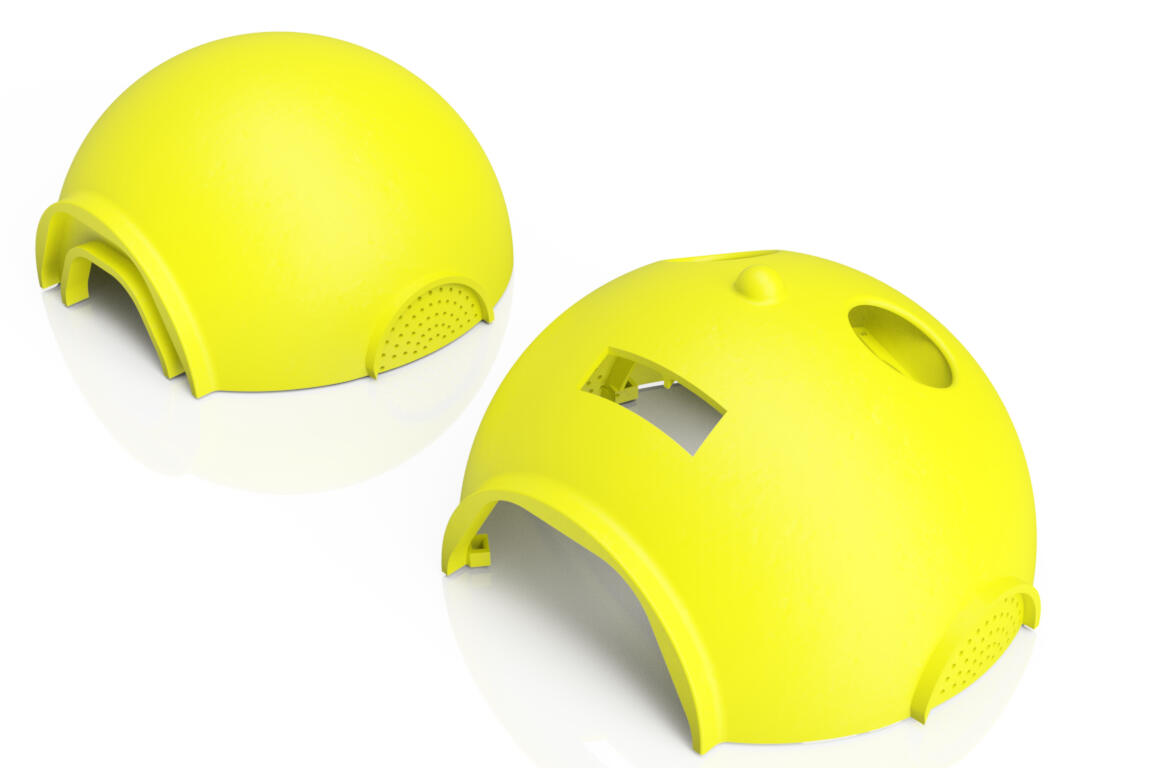
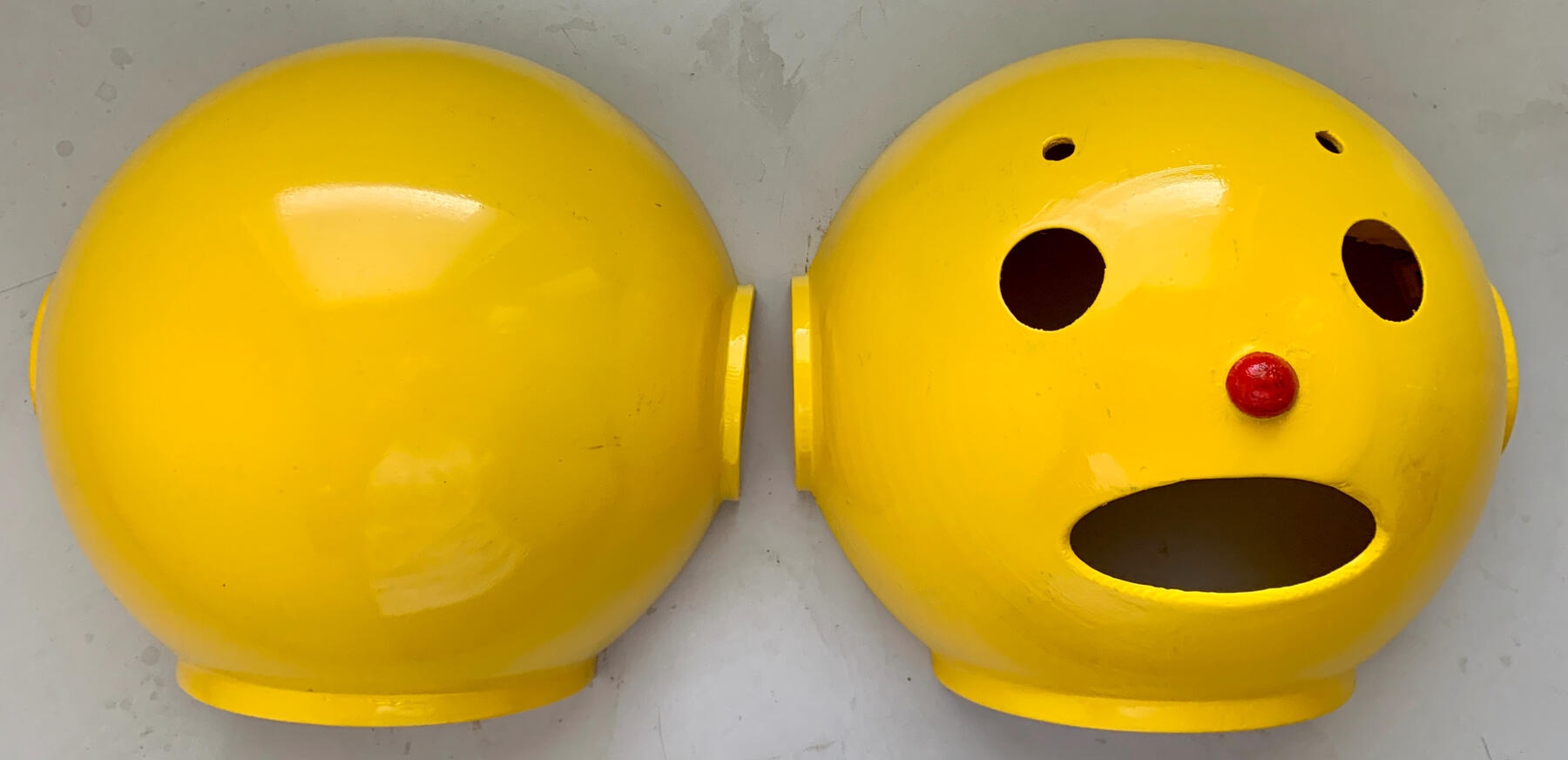
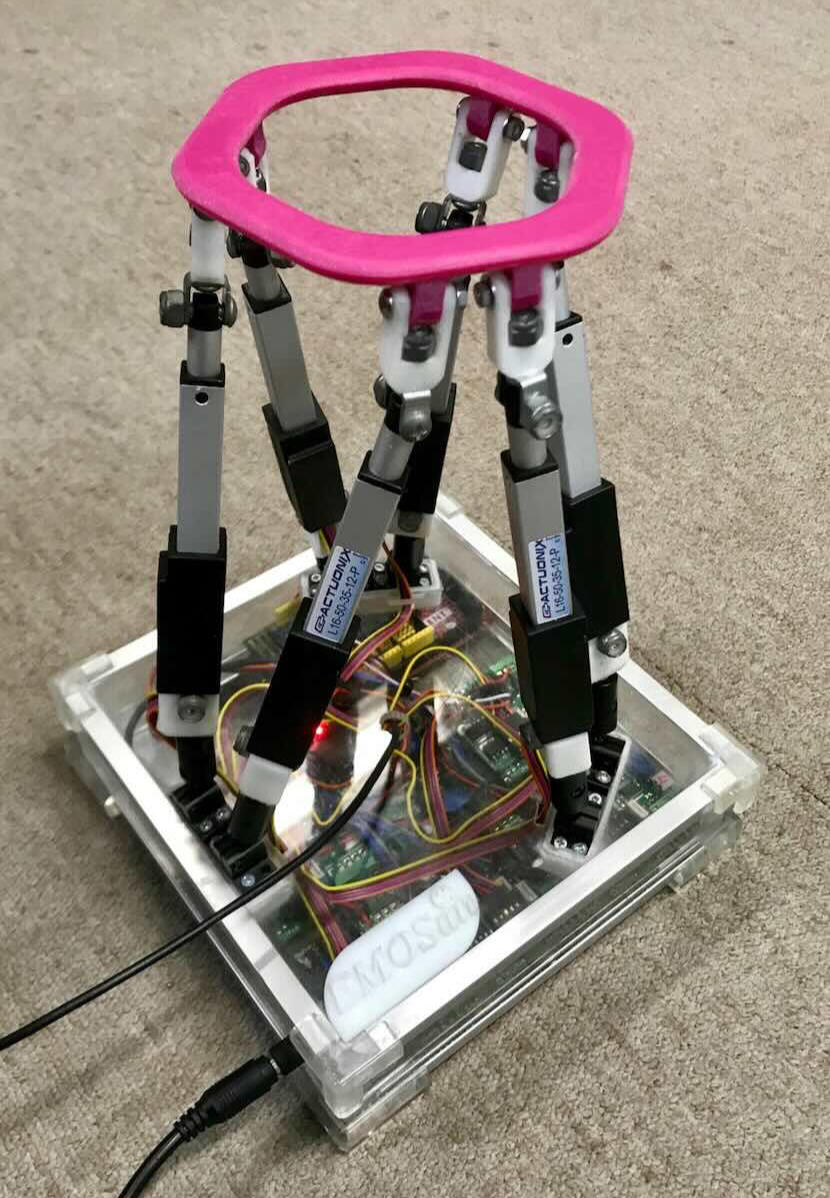
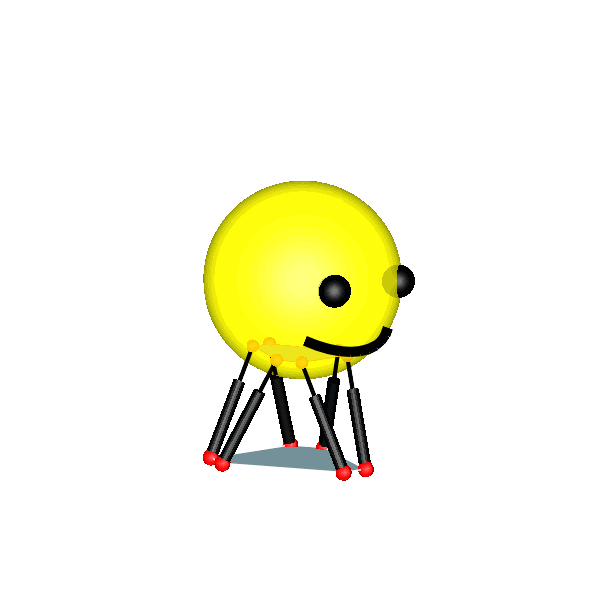
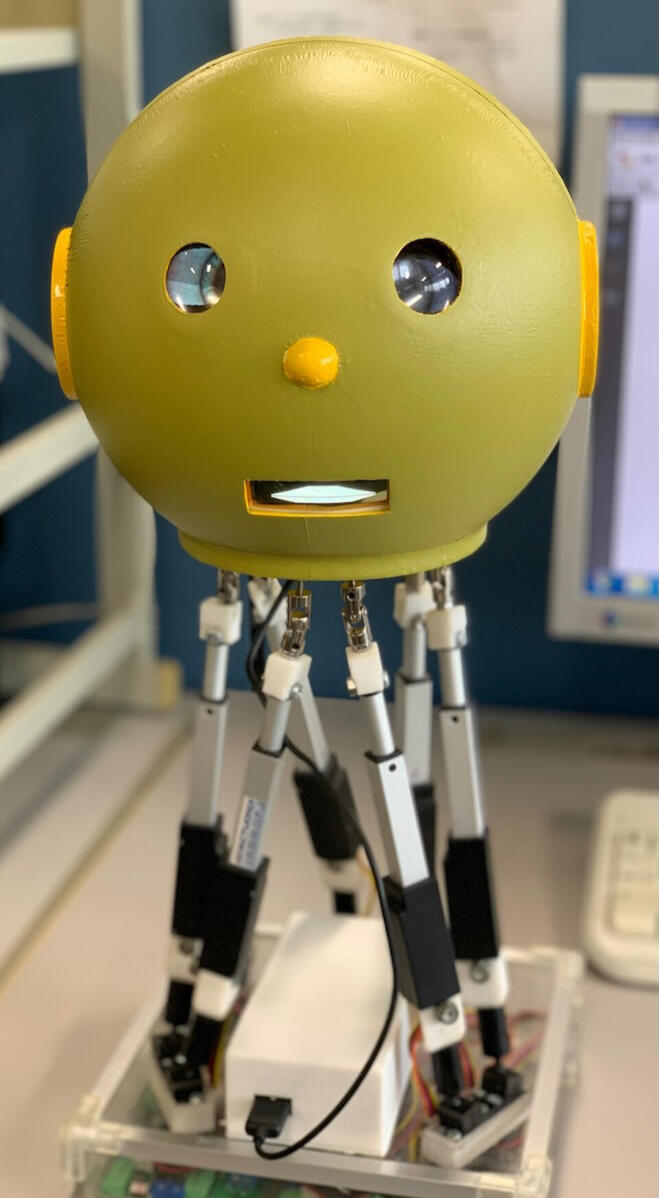
Non-verbal communication plays a crucial role in human interaction, with head movements serving as key indicators of acceptance and affinity. This paper presents the development of an emotion-expressive robot designed to replicate human head motions, enhancing affective interaction between humans and robots. The robot’s movements are realized using a parallel mechanism based on the Gough-Stewart platform, allowing precise and dynamic head motion reproduction.
A comprehensive workspace analysis is conducted to assess the robot’s capability to mimic human head movements accurately. Additionally, the potential integration of brain signal processing, specifically electroencephalography (EEG), is explored as a means of coupling human emotions with robotic responses. This capability could enable novel applications, such as teaching children basic emotions through interactive play, fostering real-time emotional engagement. The findings of this study highlight the significance of head motion in non-verbal communication and demonstrate the potential of robotic systems in enhancing human-robot interaction through expressive movement.Dachkinov, P., Tanev, T., Lekova, A., Batbaatar, D., & Wagatsuma, H. (2018). Design and motion capabilities of an emotion-expressive robot EmoSan. Proceedings - 2018 Joint 10th International Conference on Soft Computing and Intelligent Systems and 19th International Symposium on Advanced Intelligent Systems, SCIS-ISIS 2018, 1320–1326. https://doi.org/10.1109/SCIS-ISIS.2018.00207
Doctoral Thesis: A Systematic Design and Analysis Method of Elastic 3D
Printed Knee Supportive Orthotic Devices to Meet
Individual Needs
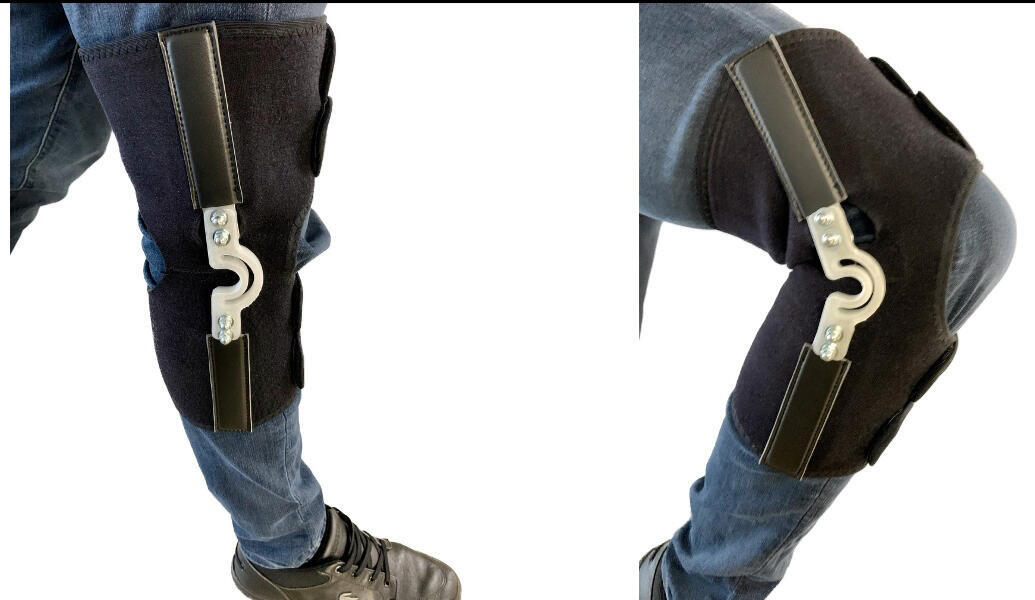
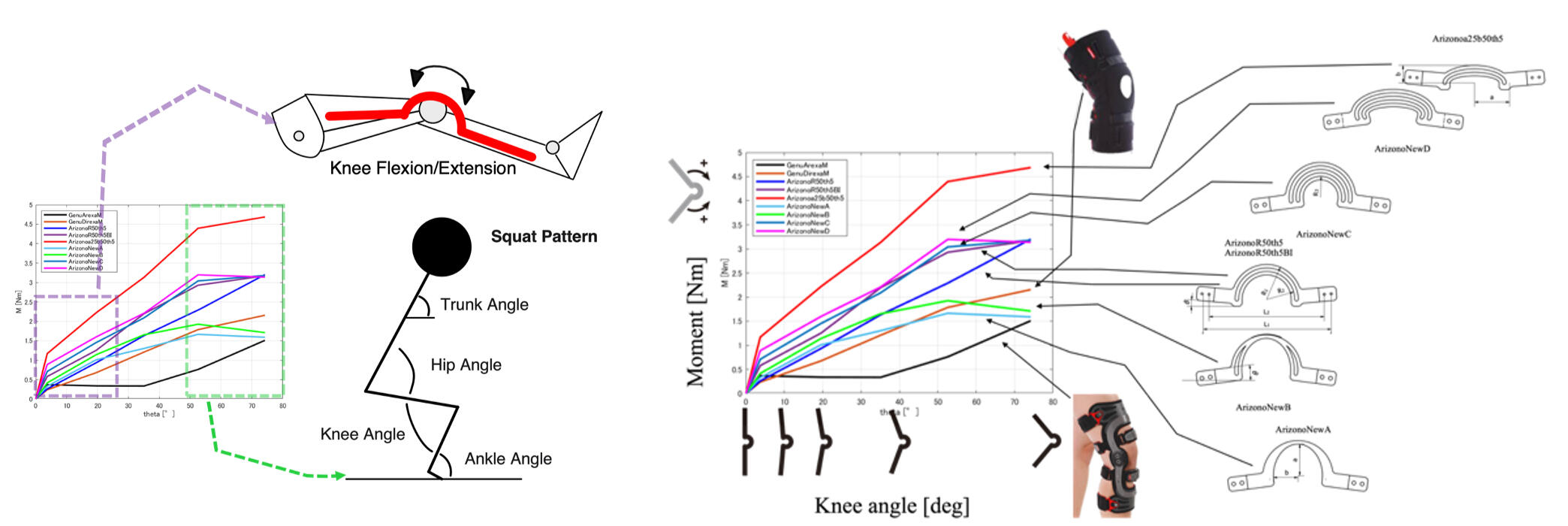
This study focuses on the development of a novel orthotic device for the human knee joint by utilizing the compliant properties of flexible 3D-printed mechanisms. The primary objective is to address the need for customizable and cost-effective solutions, particularly in low-budget healthcare settings where affordable wearable options are currently limited. Additionally, this research aims to bridge the gap in rehabilitation devices by introducing an orthosis with adjustable flexibility, allowing for dynamic adaptation throughout the recovery process.
Following a knee injury, patients often transition from rigid orthotic supports to soft fabric-based wearables, supplemented with low-impact rehabilitation exercises. However, the absence of an intermediate supportive device creates a critical challenge, particularly for athletes seeking a smoother and safer recovery process. The knee joint remains highly vulnerable during this transition, increasing the risk of re-injury. This study identifies a market gap for an orthotic device that offers adjustable elasticity, tailored to individual rehabilitation needs and lifestyle requirements. The proposed solution enhances patient recovery by providing a scalable and adaptable support system, ensuring a more effective rehabilitation experience.
Traditional rehabilitation devices lack the necessary flexibility and adjustability to fully accommodate the progressive nature of recovery. The study analyzes the distribution of moments and the compatibility of different support structures, demonstrating how parameters such as curvature radius and the number of flexures can be optimized for individualized rehabilitation. The proposed methodology supports resisted knee flexion and extension exercises, facilitating controlled improvements in range of motion (ROM) and quadriceps strength. As patients progress, they transition to more flexible devices until they achieve independent movement.
Furthermore, an alternative categorization of the devices based on task completion rather than recovery time is introduced, providing a more personalized rehabilitation strategy. This adaptable framework enhances the effectiveness of ACL rehabilitation, reducing the risk of re-injury and improving patient confidence in performing functional movements independently.
DETERMINING THE ELASTIC ROPERTIES OF FLEXIBLE 3D PRINTED BEAMS WITH VARIABLE INFILL DENSITIES AND PATTERNS
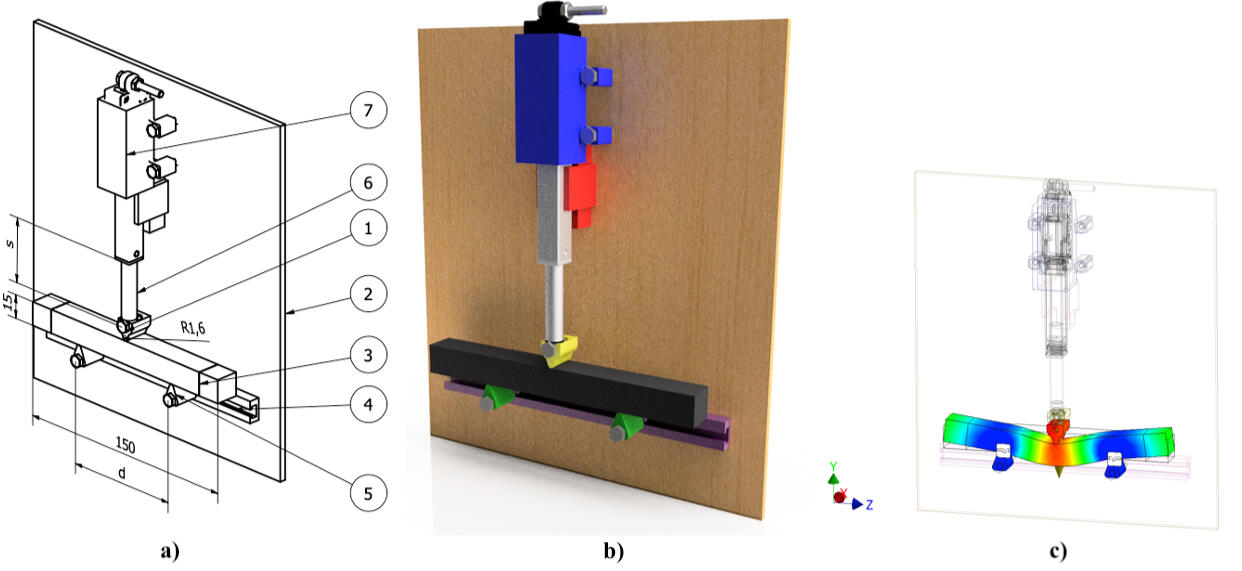
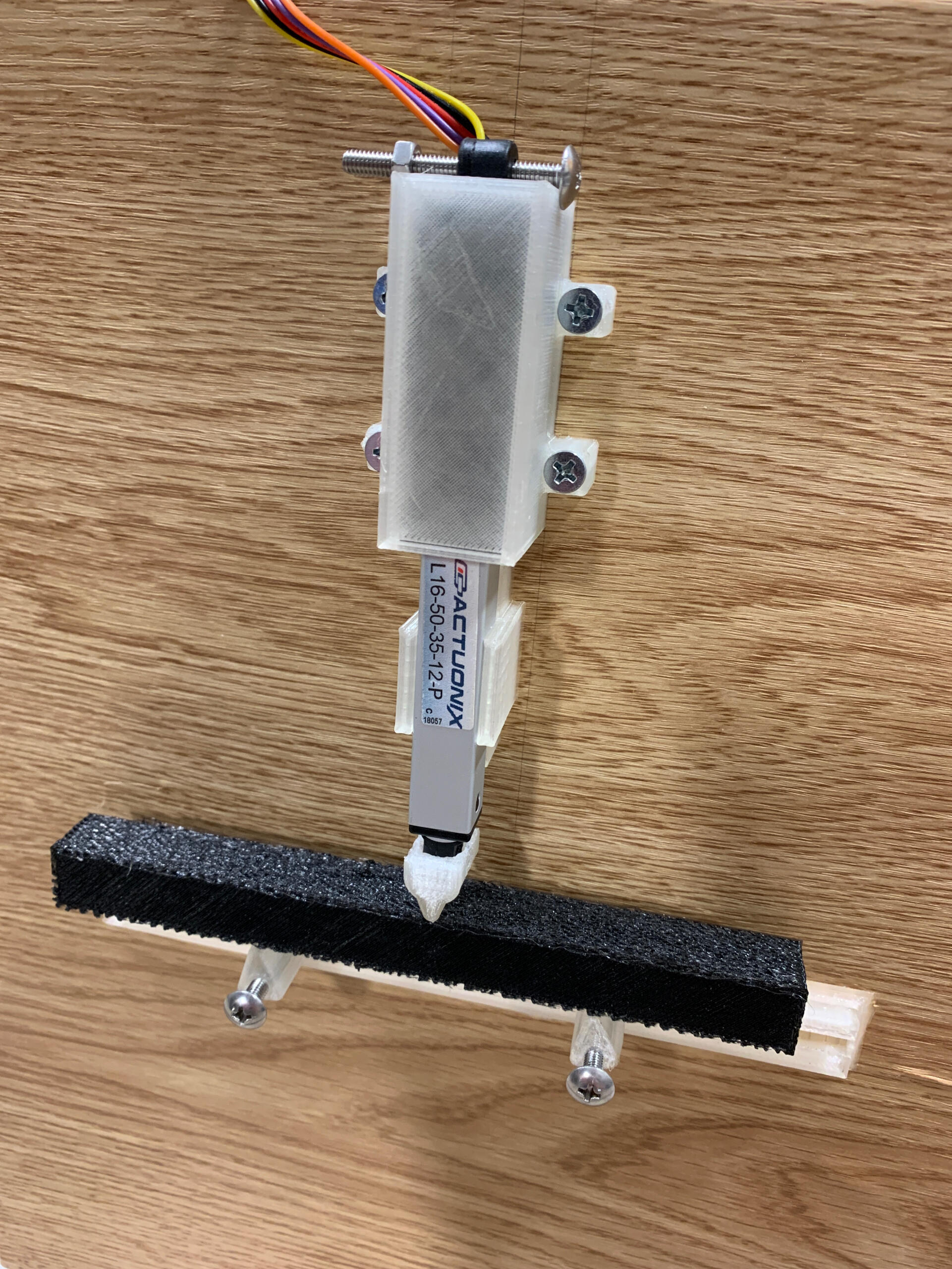
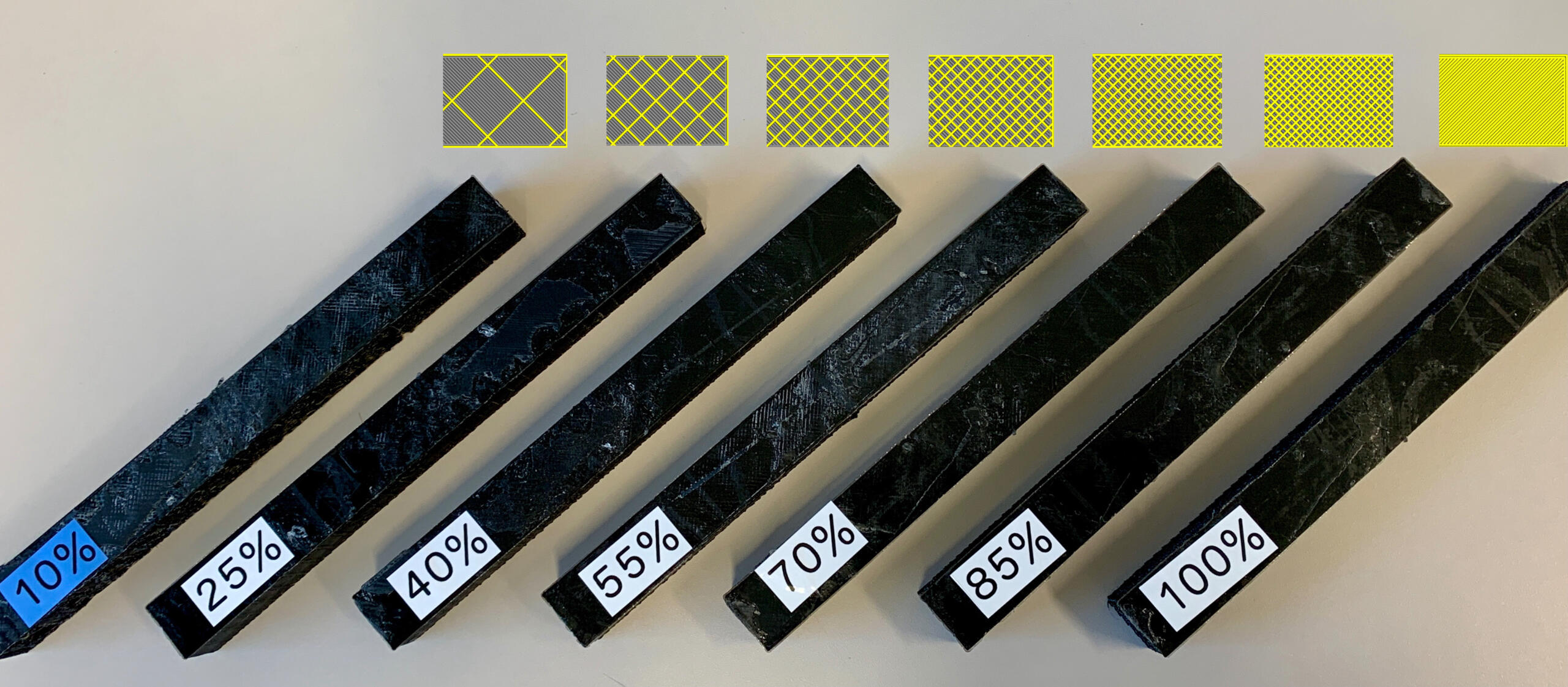
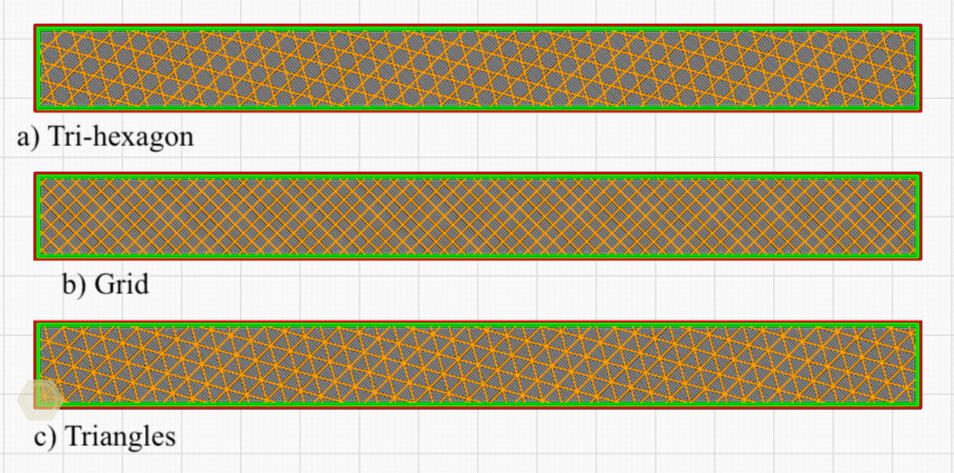
Flexible, non-linear 3D-printed materials are increasingly used in applications such as soft robotics, actuators, and medical devices. Their mechanical properties can be tailored by adjusting internal geometry and infill density, making them a focus of recent research. This study examines the effect of infill percentage and geometry on the mechanical behavior of 3D-printed flexible materials using a desktop FDM printer.
Beam samples with identical external geometry but varying infill densities (10% to 100% in 15% increments) and three infill patterns (rectangular, square, and honeycomb) are analyzed. An analytical approach, based on cellular solids theory, is used to determine in-plane stiffness properties. The results highlight significant stiffness variations despite the uniform external shape. A nonlinear finite element analysis (FEA) of a fully solid beam is also performed for comparison. The findings demonstrate how infill design can optimize the stiffness-to-weight ratio in flexible 3D-printed structures undergoing large deformations.Bhattacharjee, A., Dachkinov, P., Wagatsuma, H., & Bhattacharya, B. (2022). 3D PRINTED BEAMS WITH VARIABLE INFILL DENSITIES. 1–12.
Topology Optimisation
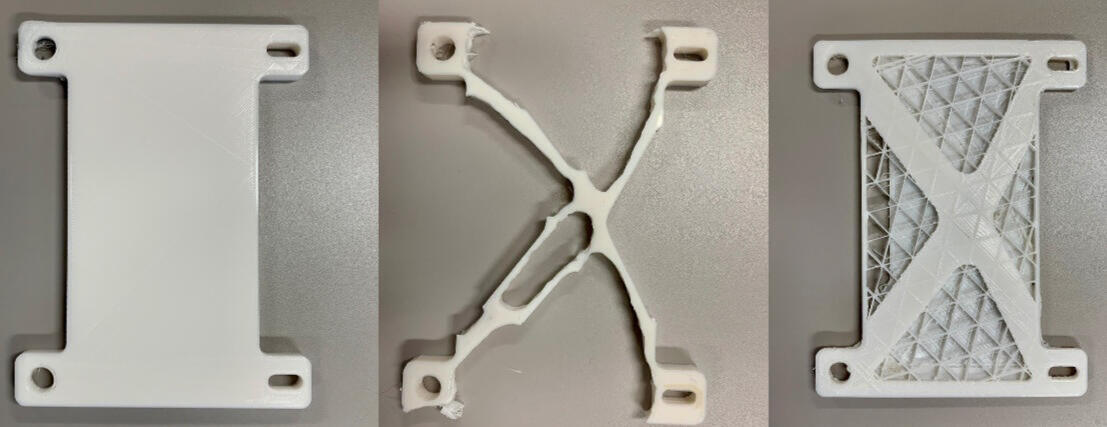
Cheetah

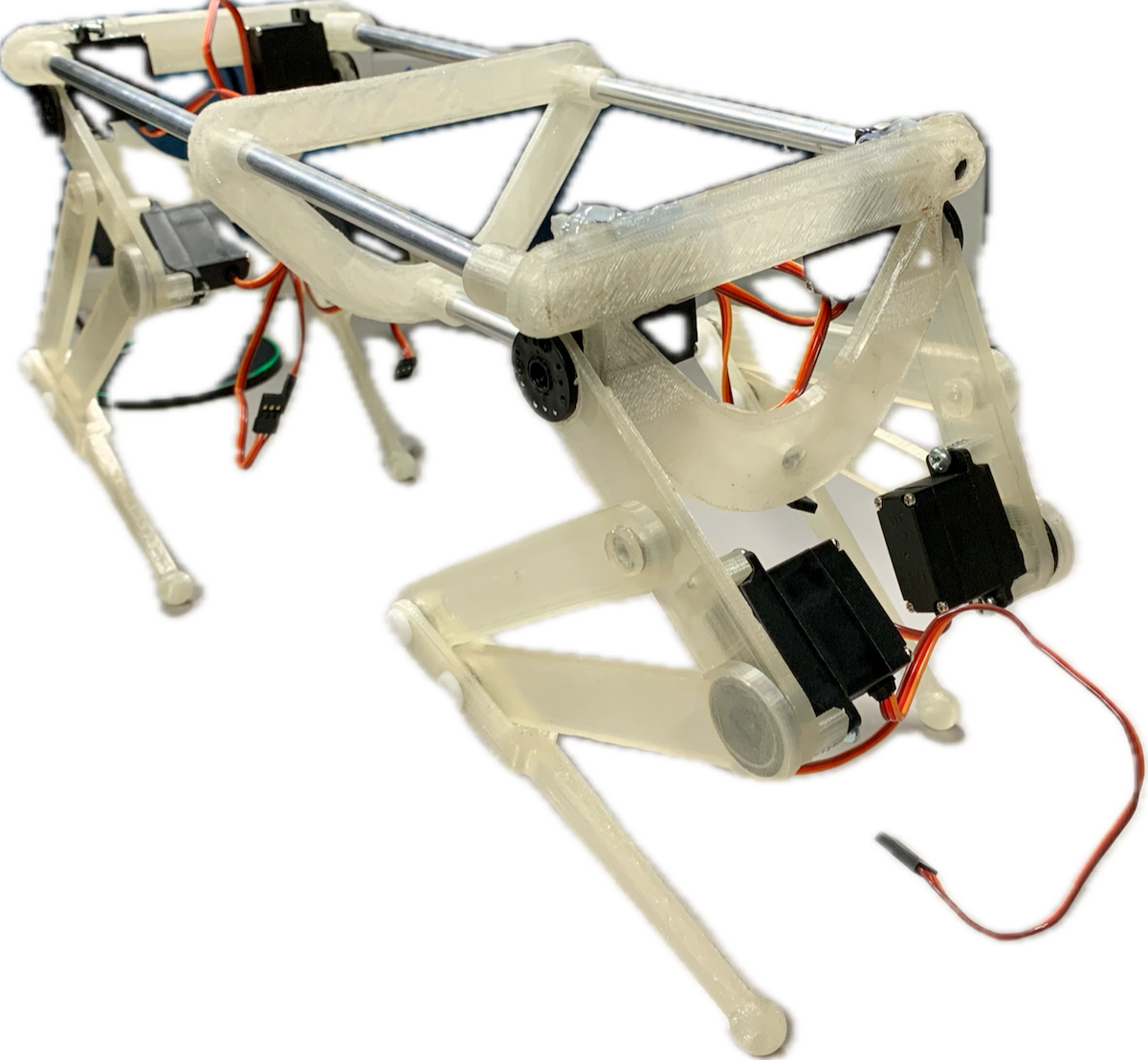
Compliant Mechanisms


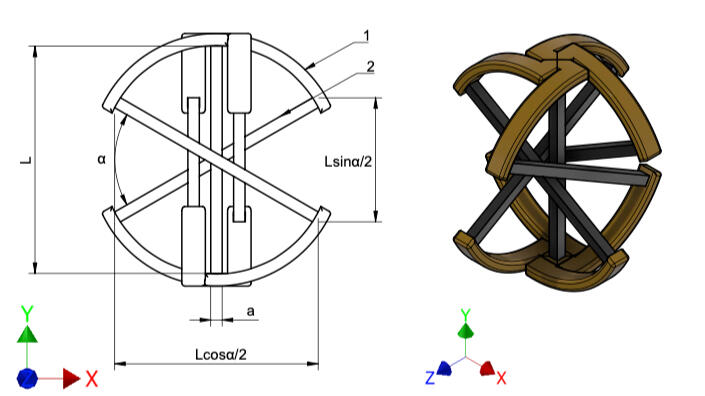
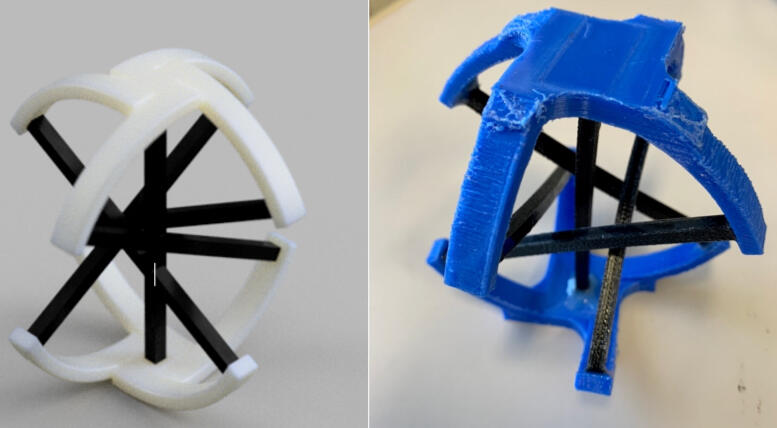
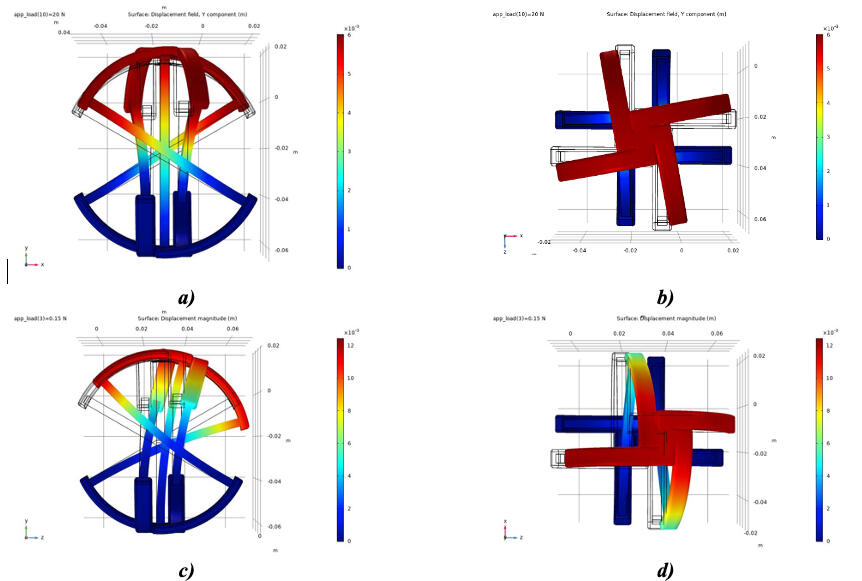
The design of 3D-printed cross-spring compliant joints is gaining attention for its versatility across various applications, particularly in precision engineering and robotics. These joints leverage flexible materials with different mechanical properties to enable motion through elastic deformation, offering a frictionless and wear-free alternative to traditional pivots.
This study presents a modified cross-spring pivot design optimized for in-plane motion. A nonlinear finite element analysis (FEA) is conducted to evaluate its mechanical behavior under various loading conditions. With the growing capabilities of 3D printing in fabricating complex geometries, compliant mechanisms are poised to revolutionize the design of high-precision actuators and robotic manipulators by enhancing performance, durability, and efficiency.Dachkinov, P., Bhattacharjee, A., Bhattacharya, B., & Wagatsuma, H. (2022). A Three-Dimensional Design of the Multi-material Joint System to Realize a Structural Spring-Damper Compliant Mechanism with Versatility in Engineering Fields. Proceedings of International Conference on Artificial Life and Robotics, 193–200. https://doi.org/10.5954/icarob.2022.gs3-1
Mechanisms
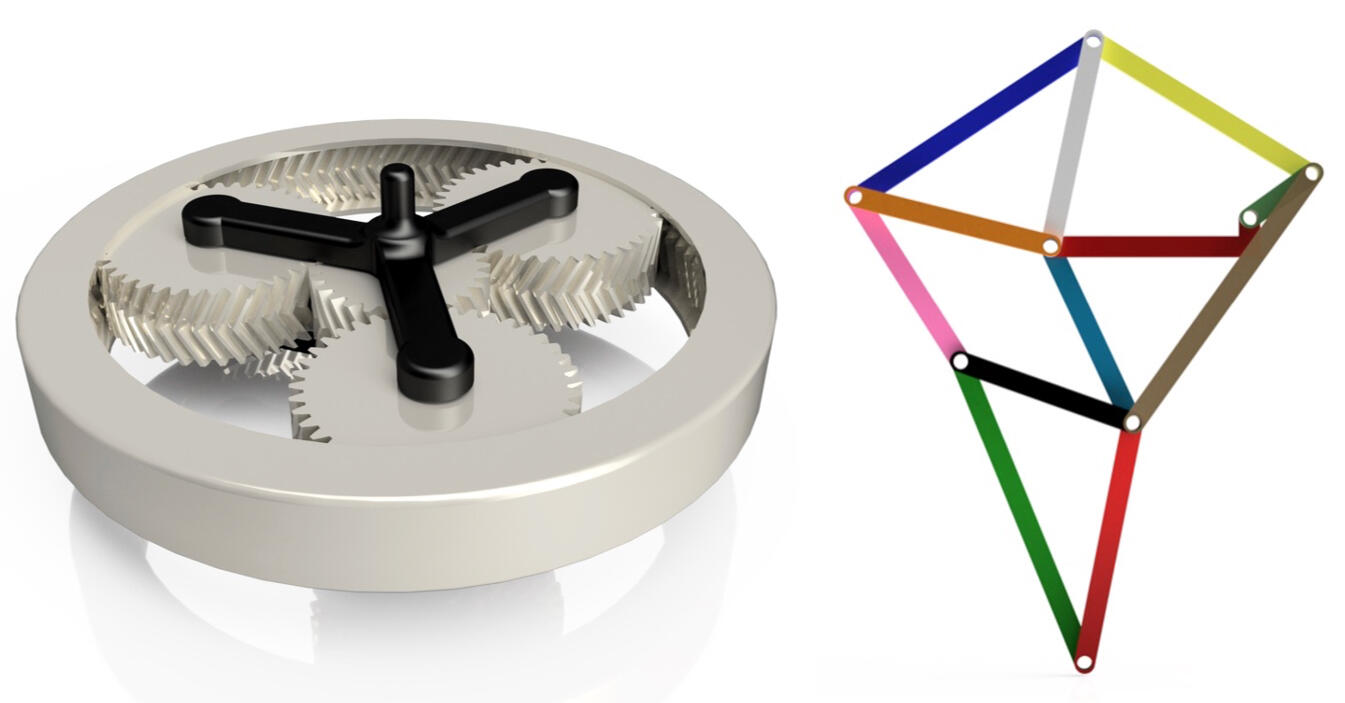
3D Printed Photos

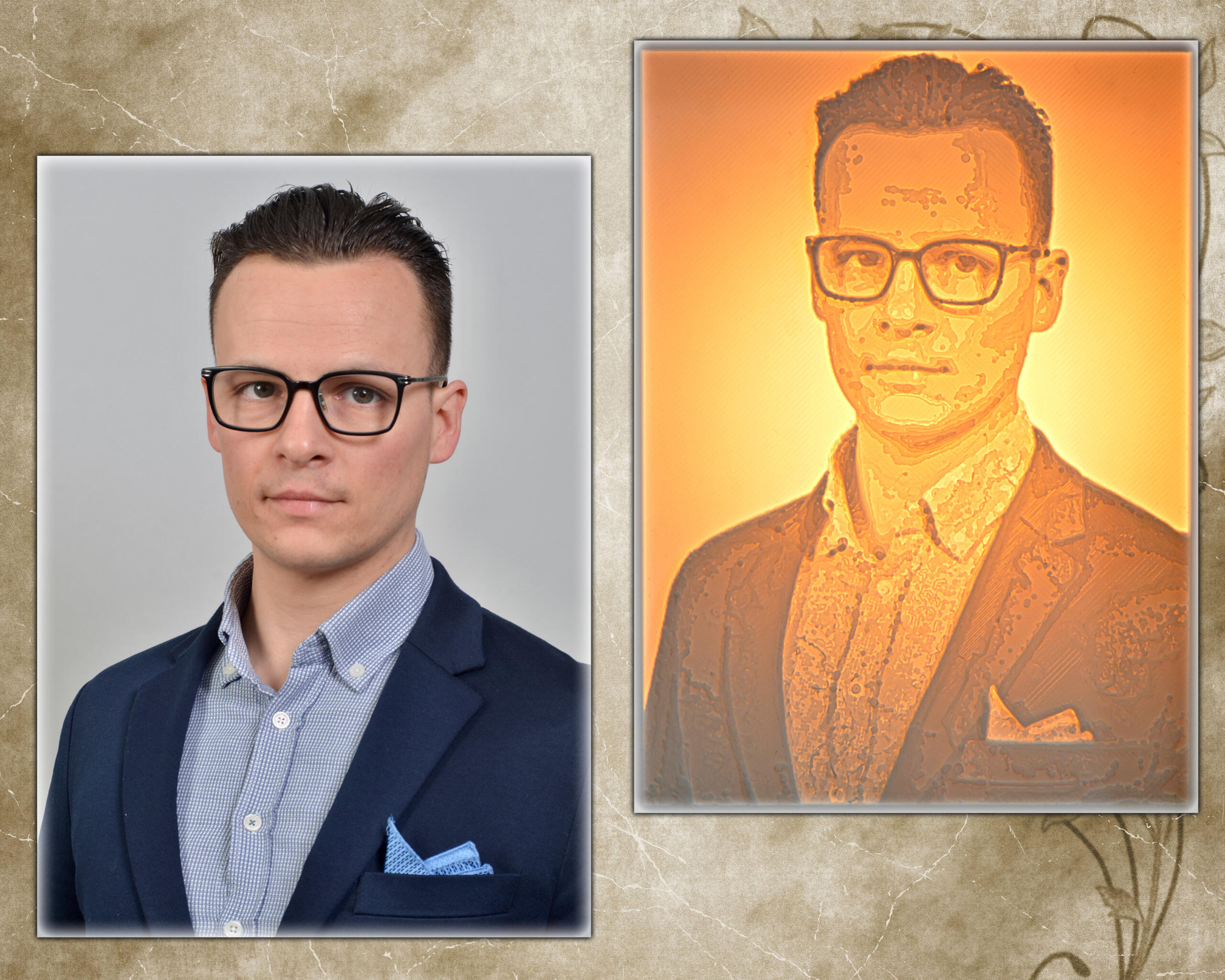
Smart Interactive Table
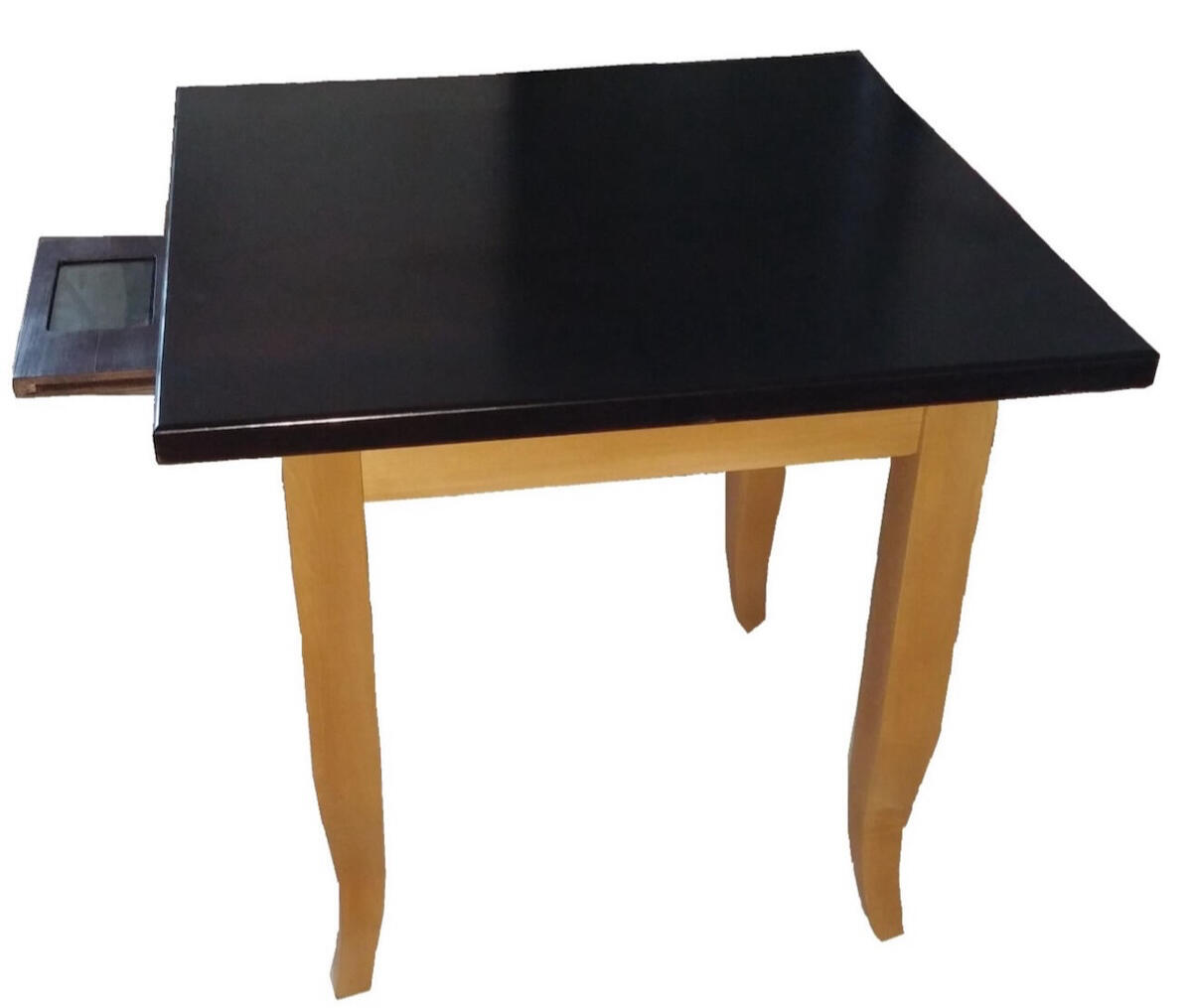
PandamorphiX
